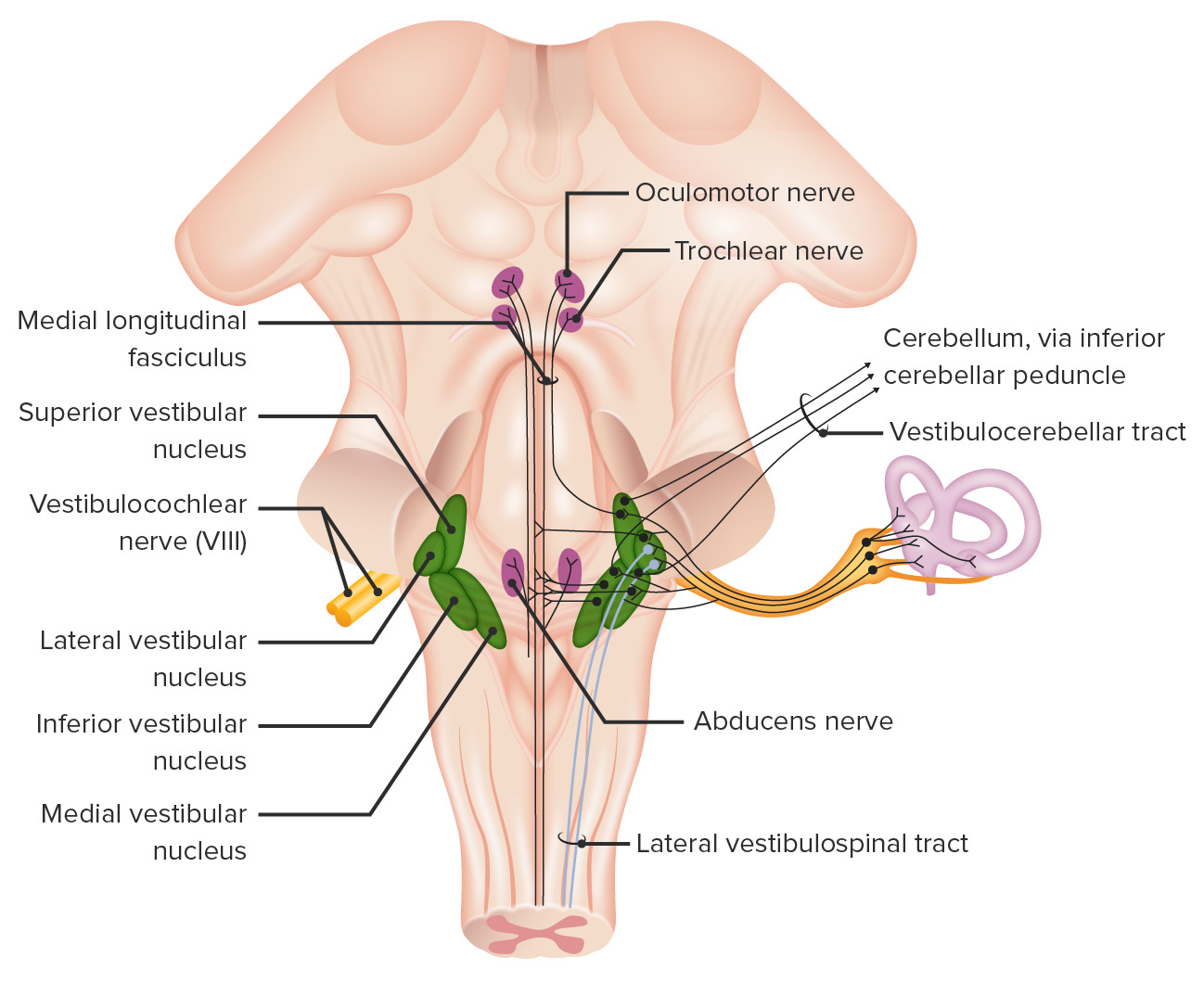Playlist
Show Playlist
Hide Playlist
Sensory Receptors of the Vestibular System
-
Slides 10 VestibularSystem 1 BrainAndNervousSystem.pdf
-
Reference List Anatomy.pdf
-
Download Lecture Overview
00:00 Welcome to this presentation on the vestibular system. The first thing that I want you to understand is the sensory receptors that are associated with the vestibular system, the system that keeps us in balance and equilibrium. We’ll go through the location of these sensory receptors. Then it’s important for you also to understand the functional considerations of these receptors. First up is the macula. 00:34 This is found in the utricle and the saccule. The purpose of the macula is to keep the head in a correct position relative to gravity. The utricle, we see in in this particular area, the macula, in this region, is oriented horizontally So it´s gonna detect linear acceleration in a horizontal direction. The saccule, which I show right in through here, this is going to have the macula oriented in a vertical position. So this will detect linear acceleration. 01:19 Another structure to consider as a sensory receptor is that of the crista ampullaris. The crista ampullaris is associated with the semicircular ducts. We see them outlined in through here. There are three of them. 01:37 Here is one, two and, then three and they are oriented in three different planes. The crista ampullaris associated with each semicircular duct is going to detect angular acceleration movements of the head.
About the Lecture
The lecture Sensory Receptors of the Vestibular System by Craig Canby, PhD is from the course Auditory System and Vestibular System.
Included Quiz Questions
Which of the following statements about the macula in the utricle is correct?
- It is oriented horizontally and detects horizontal acceleration.
- It is oriented vertically and detects linear acceleration.
- It is oriented vertically and detects vertical acceleration.
- It is oriented horizontally and detects vertical acceleration.
The crista ampullaris is associated with the semicircular ducts and performs which of the following functions?
- It detects angular acceleration movements of the head.
- It adjusts the head's position relative to gravity.
- It detects linear acceleration and head tilts on the horizontal plane.
- It gathers information about linear movement on the vertical plane.
- It maintains the balance of the entire body.
Customer reviews
5,0 of 5 stars
| 5 Stars |
|
5 |
| 4 Stars |
|
0 |
| 3 Stars |
|
0 |
| 2 Stars |
|
0 |
| 1 Star |
|
0 |





